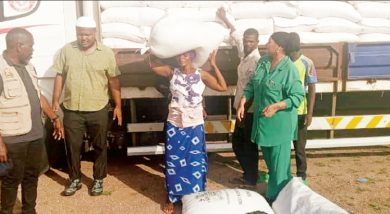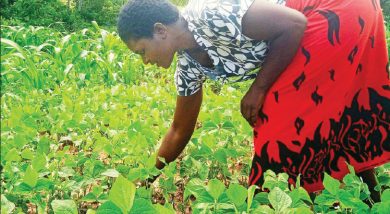Food prices on the rise
Price bulletins from the International Food Policy Research Institute (Ifpri) show an increase in prices of foodstuffs including legumes, tubers, livestock products and fish across the country.
An economist and a consumer rights activist have partly attributed the increases to the Covid-19 pandemic, which has left consumers struggling to raise enough for survival.
For the month of January, average retail prices of legumes (common beans, soya bean, groundnuts, and pigeon peas) increased by 2 to 16 percent, with prices being highest in Balaka, where common beans averaged K1 367 in January from K1100 in December 2020.

It reads: “Average retail prices of legumes (common beans, soya beans, groundnuts and pigeon peas) increased by 2 to 16 percent. Average retail prices of cassava increased by 61 percent while sweet potato and Irish potato increased by 19 and 12 percent respectively.
“Rice and sorghum retail prices increased by 4 and 13 percent respectively. Retail prices are expected to rise in the next two months as the lean season progresses.”
In an interview, Consumers Association of Malawi executive director John Kapito said while the lean season normally witnesses such increases in prices, the problem has been worsened this year by Covid-19 which is limiting economic activities.
He urged government to quickly release funds for the Covid-19 Urban Cash Intervention, which is expected to benefit 185 248 Malawians in Mzuzu, Lilongwe, Blantyre and Zomba, as one way of cushioning vulnerable citizens from Covid-19 effects.
Said Kapito: “It is a challenge because many people have lost jobs and there is very little activity on the market to create income for people doing small-scale businesses. The market has been shrunk as small-scale traders who normally go into the fields to bring commodities for sell in markets have now stopped because of Covid-19.
“As such, the market is limited in terms of supply which makes the price of goods to rise. Even when you go into supermarkets, shelves are emptying because goods are not coming in, and some traders take advantage to come up with higher prices.”
In a separate interview, economics professor Ben Kaluwa said seasonality and territorial factors including Covid-19 were to blame for such increase, adding the need to diversify activities so that the country produces enough all year round.
He said: “Where private traders are involved, expect territorial differences, that is why you have different prices for the same goods in Balaka and Karonga. We also have a season factor, and this time, we are in the lean season. January is a difficult month for low income earners and majority of Malawians.
“Covid-19 will have some factor, but not a defining one. What we need is diversification. We need to diversify outside rain-fed seasonality and territorial issues. Kasungu should be able to have locally sourced fish, not just depending on the lake.”
According to the bulletin, rice is cheapest in the Northern Region, seconded by the Central Region where the price was slightly above K600, while in the Southern Region it hit over K700. Rice is a staple for some areas in the North.
Prices for groundnuts remained at K1 000 in most markets, except Balaka and Mangochi where a kilogramme of groundnuts fetched at K1 200.
At the same time, average retail prices of chicken, eggs and goat meat increased by 1 to 11 percent.
Reads the bulletin: “Average retail prices increased by six, three and two percent for dried chambo, micheni and mlamba respectively, while average retail prices for dried usipa remained constant.”
A five litre pail of usipa, which is a common relish owing to its low price, costs K12 500 in Zomba and Mbulumbuzi markets, up from K11 250 in December, representing an 11 percent jump.
Under the Covid-19 Urban Cash Intervention, each person was expected to receive at least K35 000 for three months beginning January 2021.
Government is expected to spend about K6.48 billion each month and roughly about K19.45 billion by March for all targeted beneficiaries of the social protection package.






One Comment